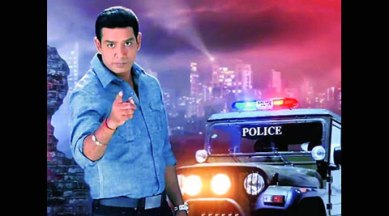Click here to follow Screen Digital on YouTube and stay updated with the latest from the world of cinema.

Sometime in February, 2015
Twenty police officers from across Maharashtra watch a television show in a dimly-lit room at the Centre for Police Research, Pune. Unlike most other Indian crime shows, this is shorn of all melodrama and focussed on the act of crime: a child has been kidnapped. Half-way into the screening, someone presses pause and the lights come on. A booming voice asks, “So what do you think happens next? Who is the criminal? How would you investigate this case?” It is instructor AV Krishnan, a retired IPS officer. The barrage of questions sends the officers into a huddle. They are trying to second-guess the fictional cops onscreen, and come up with surmises: the kidnapper is the neighbour or somebody known to the victim’s family, they say. When Krishnan plays to the end of the show, all is revealed: it was a disgruntled ex-employee who plotted the abduction of the son of his former employer. The policemen are urged to take notes. Lesson no. 1: nothing is as important as the forensic trail (phone records and samples collected from the scene of the crime).
March, 2015
George Tobechukbo, a Nigerian national’s phone beeps in a flat in Goregaon, Mumbai. It’s a message from his friend Ifeani Uzoechi, another Nigerian. “Are you home? Switch on Sony TV. Crime Patrol is on.” The 34-year-old replies, “Yes, watching, taking notes.”
the old cops-and-robbers game has a new rule. He who is glued to the telly wins, especially when it is Crime Patrol playing.
When Tobechukbo and Uzoechi were arrested in May for online fraud — conning the umpteenth victim with congratulatory messages about winning lotteries and then clearing out their bank accounts — they admitted to be avid watchers of the crime show, which is hosted by Anoop Soni and dramatises real crime cases. “One of the shows had shown that the police find it difficult to track messenger services like Whatsapp, WeChat and Snap Chat,” a crime branch officer probing the case said. (He didn’t want to be named.) “Sure enough, George and Ifeani used similar messenger services that left no trace. They also picked up the trick of using cheap Chinese mobile handsets, which cost no more than Rs 1,500, while calling up their victims. These phones have two IMEI numbers and are thus not easy to track down,” said the officer.
Movies inspiring crime is old hat. It turns out that crime reality shows have also begun to give ideas — to criminals as well as policemen on the chase.
Early in April, a 21-year-old was kidnapped from outside his plush society in Ghatkopar in central Mumbai. More than 50 policemen were put on the case but they failed to trace him. Twenty one days later, he was returned home after his family paid a ransom of Rs 2 crore.
Even so, senior police officer Sripat Kale continued to interrogate the victim, who told him about one of the gang members, who had just become father to a baby delivered at a Mumbai hospital. That information led the police to the man, and then to the leader, Ajit Apraj. A regular viewer of crime shows, Apraj hit upon the idea of a kidnapping plot from one such episode. “The show would often show kidnapping cases and how the accused managed to get away with a lot of money. Ajit was deep in debt and desperate for cash,” said Kale.
Apraj took steps to ensure he would not make the mistakes the criminals in the show had made. He too made calls from 25 different mobile phones, mostly Chinese handsets. Apraj also told the police how the anchor often spoke about how the CDR (Call Data Record) is crucial to investigations. “So he ordered his gang members to use different phones,” Kale said. The SIM cards for the phones were procured by one of the gang members from Uttar Pradesh. “In one of the episodes, policemen track down the accused through the tower locations of their mobile phones. So, Ajit gave instructions to his accomplices to travel at least a couple of kilometers away to make calls,” Kale said. No wonder, the gang stayed one step ahead of the police for a long while.
For the police, the show serves the purpose of understanding the criminal mind. In 2011, retired director-general of police, Krishnan, who heads the Centre for Police Research, thought about using crime shows as a part of his training programme. “I was impressed by the manner in which they showed how a case was cracked. They highlight the use of forensics and technical evidence in a case, which policemen often tend to miss,” says Krishnan. Investigation is a laborious process, he says. A very boring one. But matching one’s steps to a crime show just adds some excitement.
Subramanian Iyer, who created and directs the show, is happy about impressing real-life crime-solvers. “Recently, when I touring in a remote district, a police officer approached me and inquired if I could give him DVDs of my show. He wanted to familiarise himself with urban crimes and how criminals use technology to evade arrest,” he says. At any point of time, his research team is studying at least 20 crime cases in search of strong narratives. “We not only meet police officers probing the case but also the kin of the victims, eyewitnesses and stringers who covered the story,” he says. He believes those who watch his show are better prepared to tackle crime they might face. Ask him what he feels about criminals using his show as a manual, he says, “It shocks and saddens me but nothing is foolproof.”
Click here to follow Screen Digital on YouTube and stay updated with the latest from the world of cinema.